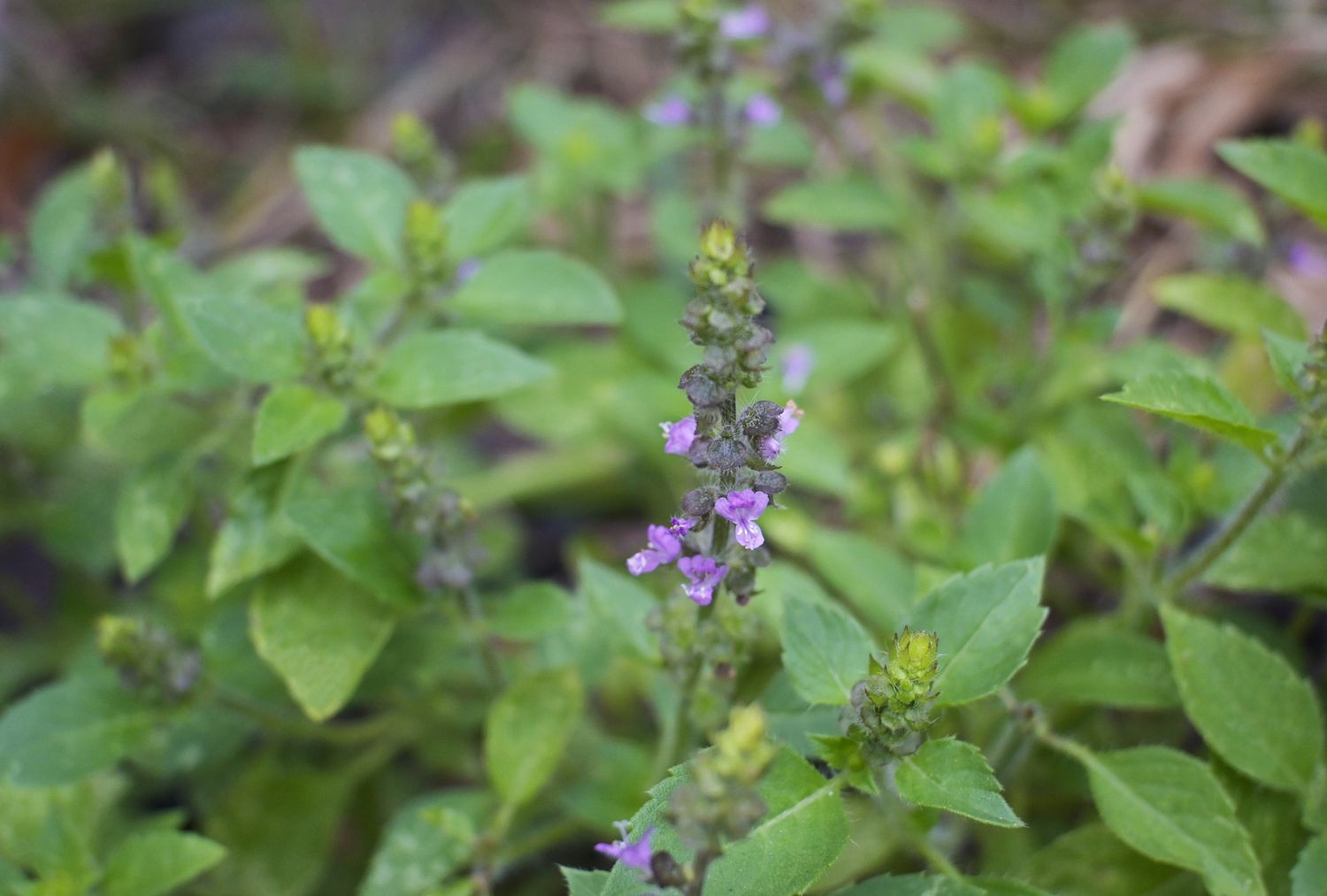
Holy Basil
Ocimum tenuiflorum
Basic Information
🌿 Family: Lamiaceae🗺️ Zone: 9-12
Other Names:
- Tulsi
- Sacred Basil
🌡️ Ideal Temperature : 65°F – 90°F
🔥 Heat Tolerance: Up to 100°F
❄️ Cold Tolerance: Down to 50°F
🌱 Type: Perennial
Layers
- Herbaceous
Functions
- Edible
- Medicinal
- Pollinator
- Wildlife Attractor
- Dynamic Accumulator
- Border Plant
- Pest Management
Pests
No pests associated with this plant.
Description
Holy Basil (Ocimum tenuiflorum) is a highly aromatic, bushy herb that grows between 30–90 cm (1–3 feet) tall. It produces small purple or white flowers that attract bees and other pollinators. The leaves have a strong, clove-like scent and are widely used in Ayurvedic medicine.
Holy Basil is a heat-loving plant that thrives in warm, humid environments with well-drained, fertile soil. It is often grown as a medicinal herb, companion plant, or natural pest deterrent.
🌞💧 Sun and Water Requirements:
- Prefers full sun (at least 6–8 hours of direct sunlight daily).
- Requires well-drained, fertile soil with moderate water needs.
- Drought-tolerant once established but benefits from regular watering.
✂️🫘 Methods to Propagate:
- Seeds: Direct sow after the last frost or start indoors 4–6 weeks before transplanting.
- Cuttings: Can be propagated from stem cuttings placed in water or soil.
- Self-seeding: Readily self-seeds in warm climates.
🧑🌾👩🌾 When to Harvest:
- Harvest leaves regularly throughout the growing season for fresh use.
- Flowers should be pinched off to encourage bushier growth.
- Entire plants can be harvested before flowering for drying and medicinal use.
Purpose
Holy Basil serves multiple functions in a permaculture system:
- Edible: Used in herbal teas, cooking, and traditional medicine.
- Medicinal: Known for its adaptogenic properties, supporting stress relief and immune function.
- Pollinator: Flowers attract bees, butterflies, and beneficial insects.
- Wildlife Attractor: Provides nectar for beneficial insects.
- Dynamic Accumulator: Improves soil by accumulating minerals such as calcium and magnesium.
- Border Plant: Used as a natural edge plant in gardens and herbal beds.
- Pest Management: Repels mosquitoes, aphids, and whiteflies.